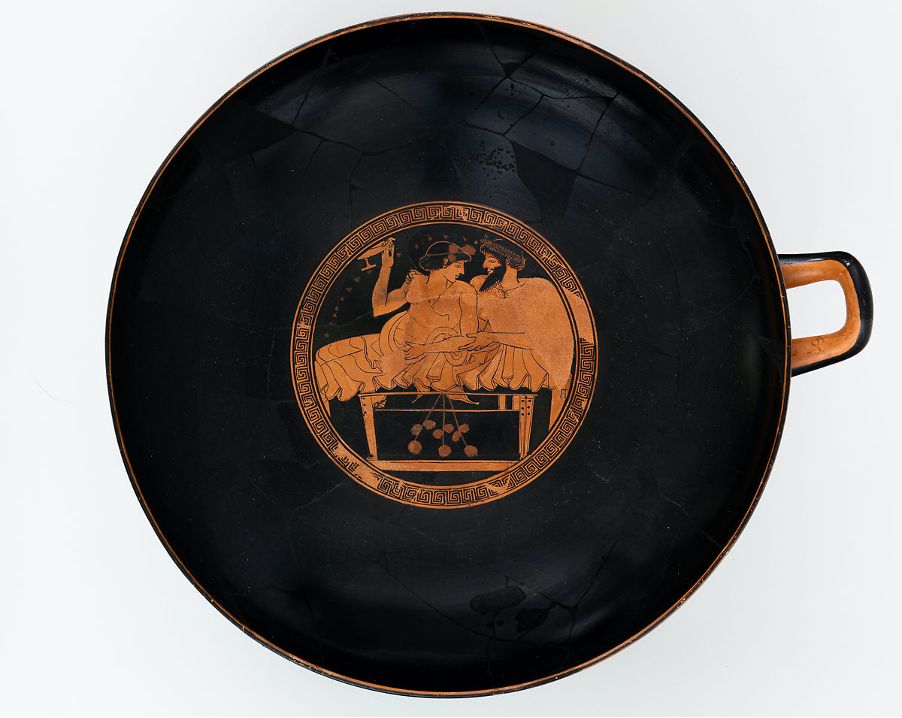 |
Etruscan amphora inv. y1984-19.
Source: Daily Princetonian |
It seems that five objects relating to Edoardo Almagià are to remain in Princeton University Art Museum (Sandeep Mangat and Miriam Waldvogel, "
Five artifacts linked to alum under investigation for art smuggling will remain at University Art Museum",
Daily Princetonian April 11, 2023). I am a little confused as the earlier report included pictures and some of the pieces mentioned in the most recent article, for example the Roman doll (inv. y1993-13), the Campanian stamnoid pyxis (inv. 87-3a–b) and fragments of a Roman Arretine bowl (inv. y1992-67), do not feature among the images.
However, among the pieces staying in Princeton is the Etruscan amphora attributed to the Paris painter (inv.
y1984-19). This is stated as: "Gift of Peter Glidewell through Edoardo Almagia, Class of 1973".
It should be remembered that Princeton has already returned a series of Etruscan architectural terracottas that were given by Almagià. These are discussed in: D.W.J. Gill, "Context matters: Princeton and recently surfaced antiquities,"
Journal of Art Crime 7 (2012): 59-66; id.,
Context matters: Collating the past, Amelia: ARCA, 2020, pp. 106–14; id., "Returning archaeological objects to Italy,"
International Journal of Cultural Property 25 (2018): 283–321 [
DOI].
The latest article in the Daily Princetonian seems to confuse items that had been loaned by Almagià and those that had been given by him.
The article does include an interesting statement attributed to Almagià:
"He added that he gave these fragments to Dietrich von Bothmer, a prominent German-American art historian."
We are aware that Almagià appears to have been the source for fragments in Bothmer's collection that had been acquired in 1984, 1986 and 1987. Does this imply that the fragments appearing in the original article were derived from Almagià? And was
the Psiax fragment from the Centre Island private collection also from this source?
The
Daily Princetonian mentions the seizure of fragments from Bothmer's collection although as far as I am aware no connection with Almagià had been made. These are discussed in: D.W.J. Gill, "Context matters: Fragmented pots, attributions and the role of the academic,"
Journal of Art Crime 8 (2012): 79-84. However other Bothmer fragments were included in
the recent seizure from New York's Metropolitan Museum of Art.
I am aware of other Almagià material in a
north American university collection that appears to have been derived from Crustumerium in Lazio. (A discussion of the piece along with other items from the same place features in a forthcoming article.)
Is it time for Princeton to provide additional so-called "provenance" information on its website?
| |





